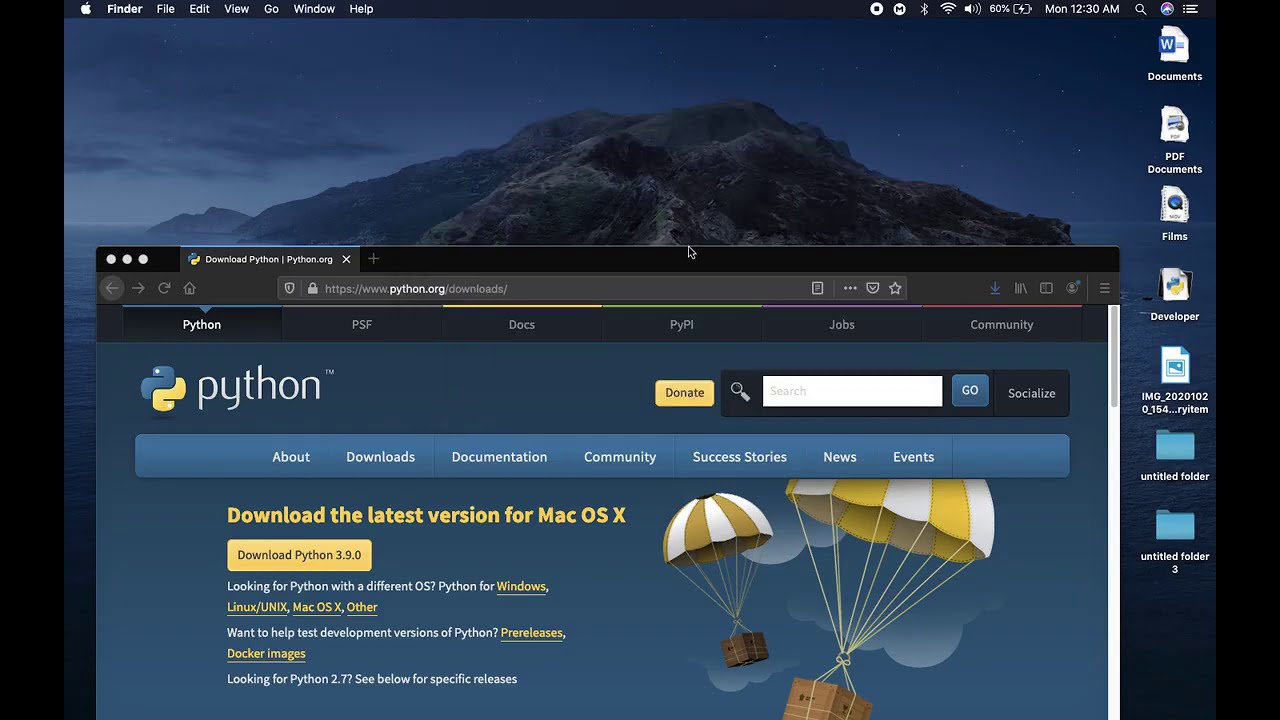
#APPZNE PYTHON FOR MAC CODE#
An ISA is a specification for how a family of chips work at a low level, including the instruction set that machine code must use. To elaborate on that, we need to dive into instruction set architectures (ISAs).
#APPZNE PYTHON FOR MAC SOFTWARE#
Instruction sets, ARM, and x86 compatibilityĪs software users and creators, our first question about Apple Silicon is: Do I need to change anything for my software to continue working? The answer is: Yes, but less than you might think. We’ll touch on the impact of these changes more in later sections.

System RAM is soldered directly to the CPU package and shared by the CPU, GPU, and ANE cores.

The CPU architecture changes from x86 to ARMĪpple now designs the on-chip GPU (rather than an on-chip GPU from Intel or separate GPU chips from NVIDIA or AMD)Ĭustom Apple accelerators from the iPhone and iPad chips are now available on the Mac, such as the Apple Neural Engine (ANE) Nevertheless, we’re pretty confident the M1 is usually faster for a “typical user” (not necessarily a “data science user”) workload than the previous Intel Macs while simultaneously using less power.įrom a CPU architecture perspective, the M1 has four significant differences from the previous Intel CPUs: On the one hand, what could be more objective than measuring performance quantitatively? On the other hand, benchmarking is also subjective, as the reviewer has to decide what workloads to test and what baseline hardware and software configuration to compare to. It is important to note that benchmarking is a tricky subject, and there are different perspectives on exactly how fast the M1 is. So what’s better about these Apple CPUs? Based on many professional reviews (as well as our testing here at Anaconda), the primary benefits of the M1 are excellent single-thread performance and improved battery life for laptops. In April 2021, they added the M1 to the iMac and iPad Pro. They consisted of a MacBook Air, a 13” MacBook Pro, and a Mac Mini that looked identical to the previous model but contained an Apple M1 CPU instead of an Intel CPU. As promised, Apple released the first Silicon Macs in November 2020. So it was not a complete surprise when Apple announced at their developer conference in 2020 that they would be moving the entire Mac product line to their own CPUs over the next two years.

After so many iterations, it became clear to technology observers that Apple’s CPUs, especially in the iPad Pro, had become performance-competitive with low-power Intel laptop CPUs.

Apple has been a CPU designer for nearly a decade (since releasing the iPhone 5 in 2012), but until the end of 2020, their CPUs were only used in mobile devices like the iPhone and iPad. In short, Apple is transitioning their entire laptop and desktop computer lineup from using Intel CPUs to using CPUs of Apple’s own design. In this post, I'll break down what Apple Silicon means for Python users today, especially those doing scientific computing and data science: what works, what doesn't, and where this might be going.
#APPZNE PYTHON FOR MAC FOR MAC#
As a result, much has been written in the technology press about what the transition means for Mac users, but seldom from a Python data scientist's perspective. Even if you are not a Mac user, you have likely heard Apple is switching from Intel CPUs to their own custom CPUs, which they refer to collectively as "Apple Silicon." The last time Apple changed its computer architecture this dramatically was 15 years ago when they switched from PowerPC to Intel CPUs.


 0 kommentar(er)
0 kommentar(er)
